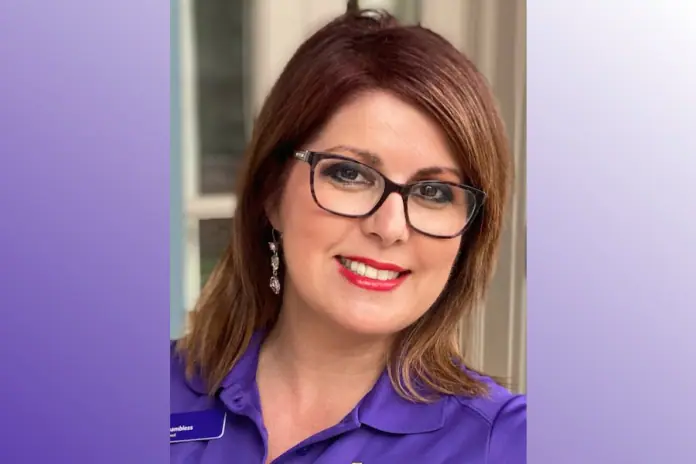“Hey, McFly. I thought I told you never to come in here.”— Biff Tannen, “Back to the Future”
The classic case of a high school bully, beating up on one George McFly, is the underlying story line in one of America’s most beloved movie classics, “Back to the Future.” Boys will be boys, its accepted theme, felt commonplace to storytelling while growing up in the 1980s.
But after generations of knowledge have been bequeathed from a field of social research that identifies unhealthy behavior in both the schoolyard and families alike, nobody is laughing at characters like Biff anymore. We know too much.
The cycle of abuse is one that originates in the heart. Manifesting with violence in the home, it can transcend to bullying on the playground, seeded in the hearts of those with little eyes who have witnessed the unfathomable. Without intervention, its capacity to implant itself back into the home of the next generation is highly likely. For this reason, notions must be taken more seriously than ever in that the weak will inherently be targeted at school and there is nothing you can do to stop it. Though this might have been once accepted as a societal norm, we now know that bullying, with its long term effects, is an indicator of something far more serious in its link to domestic violence in adulthood.
According to the American Psychiatric Association, the correlation between childhood bullying and adult domestic violence is profound. Today, with all of the potential and, frankly, probable exposure to the easily accessible atrocities offered by Instagram, TikTok, and the like, is it any wonder that modern society is more susceptible than ever to reprobate thinking that fuels violence?
Because of abuse’s blatant pattern, today the adult abuser’s scheming should be more apt than ever to self-incriminate, thereby releasing the victim in spite of its wicked blame game. The trouble is, most victims have fallen prey to the abuser’s bait of guilt and shame, refusing to release themselves even when they are free to walk. In the highly publicized kidnapping case of then 14-year-old Elizabeth Smart, she freely confesses today that it was her survival instincts that caused her to comply.
So with the recent release of raw bodycam footage of the young Gabby Petito and fiancé Brian Laundrie, this toxic relationship caught somewhere between childhood and adulthood exhibits some telltale signs, according to forensic psychiatrist Dr. Ziv Ezra Cohen who says there is more than meets the eye. Meanwhile, a handful of online super sleuths who had previously teetered on victim-shaming Gabby for not walking away while she still had a chance, have hushed their rhetoric with the discovery of her remains. Only a mere fraction of the public nearly bought into Brian’s Laundrie’s appeal that Gabby was unstable.
If we have learned anything at all from, yet another, case like this one is that pointing to the victim is Laundrie’s first statement after “Did you talk to my fiancé? She just gets really worked up sometimes,” stated Laundrie. This classic response “she’s just crazy” is a telltale mind trick used by abusers that is becoming more widely recognized than ever as a sign of their hidden abuse. It speaks on the victim’s defense, even when she would not speak on her own.
In a recent post that has gone viral, Julie Perkins Cantrell, award-winning writer and advocate for victims of domestic abuse sums it up in this way, “When an abuser is determined to destroy his target, he will not stop until that target is erased from this world or stripped from her life. And in many cases, he’ll walk away without any consequences, often taking the target’s finances, home, vehicle, reputation, or even her children with him.”
Gabby Petito was at the beginning of living such a nightmare, but instead of being stripped from her life, her life was stripped from her.
Cantrell also wisely stated that we should never buy into the false narrative of an abuser. One signature sign that someone is truly being abused is the defense of their abuser. Cantrell encouraged readers to recognize the difference between healthy and unhealthy relationships, along with the warning signs of abuse. Understanding the dynamics of trauma bonds, gaslighting, hovering, love bombing, enabling, triangulating, and projecting may save another victim’s life.
When signs of abuse show up in young people, believe them. A recent bullying case in a rural, private school caused an upstir in small town community. A high school freshman reported being publicly sodomized by his peers with a foreign object over the course of an entire school year. Having kept silent, he was forced to tell his parents only after the students doing the alleged bullying planned a hell day with his name on it and it became apparent to the community that they would find out what had been going on. As part of the hell day, a video was allegedly shown in a class presentation that featured his moments of public humiliation, only to be brushed aside by the teacher.
The case is opening up major community outrage and divisions from those involved, but none so alarming as the public statement from the very school itself, who proceeded to take photos of the object near a tape measure, so as to prove that it could not have possibly been a crime weapon. Causing all the more grief to a hurting community, the response was considered flippant and unsympathetic with many pointing out the victim shaming by the school’s board of directors and, perhaps, the most incriminating evidence of school negligence.
In most cases, an abuser will paint their victim as a liar, as well as point out their compassion to the victim as they describe the victim’s current mental state in an effort to build support for their own innocence. As a society, we have come too far since cases such as The People of The State of California v. Orenthal James Simpson or The State of Florida v. Casey Marie Anthony to buy into the lie. If you see something, say something is still one of the best tools of investigative discovery that should be applied from the playground into adulthood.
Unfortunately, while the Utah police did their work thoroughly and with care, Gabby Petito “the aggressor” did not survive. When she told police it was her fault, they believed her.
To read more, see my previous columns “When Blood Cries Out” and “The Atonement” at www.crosstimbersgazette.com.





















